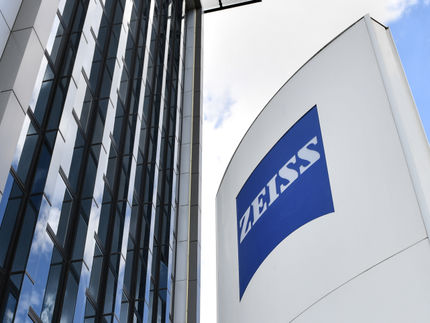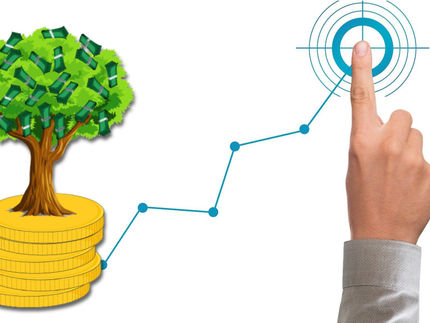A successful first half year for ZEISS
Positive trend continues despite challenging conditions
The positive trend continues at the ZEISS Group, which had a positive end to the first six months of fiscal year 2021/22 (ended 31 March 2022) that was significantly higher than the very good result seen in the previous year: revenue increased by 20% to 4.1 billion euros (prior year: 3.4 billion euros). At 736 million euros, earnings before interest and taxes (EBIT) were also significantly higher than the prior-year period (prior year: 591 million euros). The EBIT margin is 18%. The high level of incoming orders also continued in the first half of the new fiscal year. Incoming orders increased to 5.49 billion euros (prior year: 4.20 billion euros).

Photo: ZEISS
"We have had a good start to the fiscal year with revenue in the first half of the year once again exceeding the very good level from last year. All four ZEISS segments have contributed to this considerable growth dynamic despite challenging conditions," said Dr. Karl Lamprecht, President & CEO of ZEISS. "We have a global setup, a broad portfolio and have even increased our expenditure on research and development. We are reaping the benefits of this at the moment and this is reflected in our half-year figures, our growth and our capacity for innovation."
To date, ZEISS has also been in a position to maintain the high level of incoming orders and revenue in the first half of the new fiscal year with considerable growth dynamics across all four segments.
The geopolitical and overall economic conditions, in particular the war in Ukraine, as well as the effects of the corona pandemic – currently in China – and the resulting disruptions to supply chains have strongly impacted the individual strategic business units to differing degrees.
The Semiconductor Manufacturing Technology (SMT) segment was substantially affected by the high demand on the semiconductor market and achieved an additional boost to its already high revenue. There was strong demand for both the innovative extreme ultraviolet (EUV) lithography systems and the deep ultraviolet (DUV) lithography systems. Alongside digitalization, trends such as artificial intelligence or autonomous vehicles have further propelled the semiconductor market to an all-time high. In the future, the next EUV generation, High-NA EUV, will enable the production of more powerful and more energy-efficient chips at lower costs.
The positive trend toward high demand for the products and solutions from the direct-to-market segments continued in the first half of the current fiscal year.
In the first six months, the Industrial Quality & Research (IQR) segment achieved very good half-year revenue, which was significantly higher than the prior year. Both strategic business units, Industrial Quality Solutions and Research Microscopy Solutions, and all regions contributed to the significant double-digit growth. Growth in the AMERICAS region was particularly strong versus the prior year. The positive development in areas like electron microscopy, especially in the semiconductor and battery application fields, contributed to this growth. The business with solutions for industrial quality assurance has also performed well in the fields of new energy vehicles and medical technology.
The positive development in the Medical Technology segment continued in the first six months of 2021/22, and globally this market recovery has already exceeded the level it had been at before the COVID-19 pandemic. Incoming orders remain at a high level with an increase in orders received. Revenue saw double-digit percentage growth despite ongoing bottlenecks in the supply chains and procurement of materials. The two strategic business units, Microsurgery and Ophthalmic Devices, contributed to this growth. All regions recorded positive developments, and the APAC region made the largest contribution to this growth.
The Consumer Markets segment also achieved double-digit growth in revenue in the first two quarters of the current fiscal year versus the prior-year period. This increase in revenue is due primarily to innovations, digital products and services in all regions in the field of eye care, and the improved business with nature and sports optics and ZEISS cine lenses.
Key figures
Free cashflow amounted to 709 million euros (prior year: 609 million euros). Group equity rose by 11% to 6.117 billion euros in comparison with fiscal year end 2020/21 (30 September 2021: 5.494 billion euros), corresponding to an equity ratio of 54% (30 September 2021: 52%).
ZEISS intends to continue its growth trajectory by making further large investments in digitalization and increasing capacities, in particular at Semiconductor Manufacturing Technology. In conjunction with the consistently high expenditure on research and development, the ZEISS innovation strategy is a cornerstone of the company's expedited growth.
At 531 million euros, the expenditure on research and development amounted to around 13% of revenue in the first half of 2021/22 (first six months of 2020/21: 425 million euros).
The investments in plant, property and equipment totaled 307 million euros in the reporting period (first six months of 2020/21: 264 million euros) as compared to depreciations in the amount of 143 million euros (first six months of 2020/21: 127 million euros).
Net liquidity at the reporting date of 31 March 2022 was 2.249 billion euros, which equates to an increase of +129 million euros versus the end of fiscal year 2020/21.
The global orientation of ZEISS creates a stabilizing effect, and once again all regions contributed to the continued strong growth trajectory. The APAC region got off to an excellent start in the new fiscal year. Higher rates of growth were also achieved in the EMEA und AMERICAS regions as compared with the prior-year period. In the AMERICAS region, this was due in part to the strong performance in the US.
"The positive development of all our financial KPIs confirms we had a good start to fiscal year 2021/22. This is also evident in the considerable expenditure on research and development, which totaled over half a billion euros in these six months alone," said Dr. Christian Müller, CFO of Carl Zeiss AG. "What's more, we are also planning on continuing the ZEISS Group's growth trajectory with substantial investments in digitalization, and on moving forward with increasing our capacities. This includes the targeted expansion of infrastructure and recruiting more staff. In 2022 alone, 500 new employees have already been hired at the Semiconductor Manufacturing Technology segment at our site in Oberkochen, Germany, and more will follow."
At the end of the first half of the fiscal year (31 March 2022), ZEISS had a global workforce of 36,855 employees in its business units. The headcount therefore increased by more than 7% versus 31 March 2021. This reflects the growth trend in all segments.
Outlook
"Future business development depends primarily on the challenges presented by the geopolitical situation and potential disruptions to the supply chains – and, judging from what we can see in China, the COVID-19 pandemic is not over yet in the wider world. Nevertheless, we currently assume that growth will also continue in all four ZEISS segments in the second half of the fiscal year," said Lamprecht. "It is crucial that we remain close to our customers, provide them with optimum support in the face of these new challenges, and that we – and this is typical for ZEISS – continue to heavily invest in the future."























































